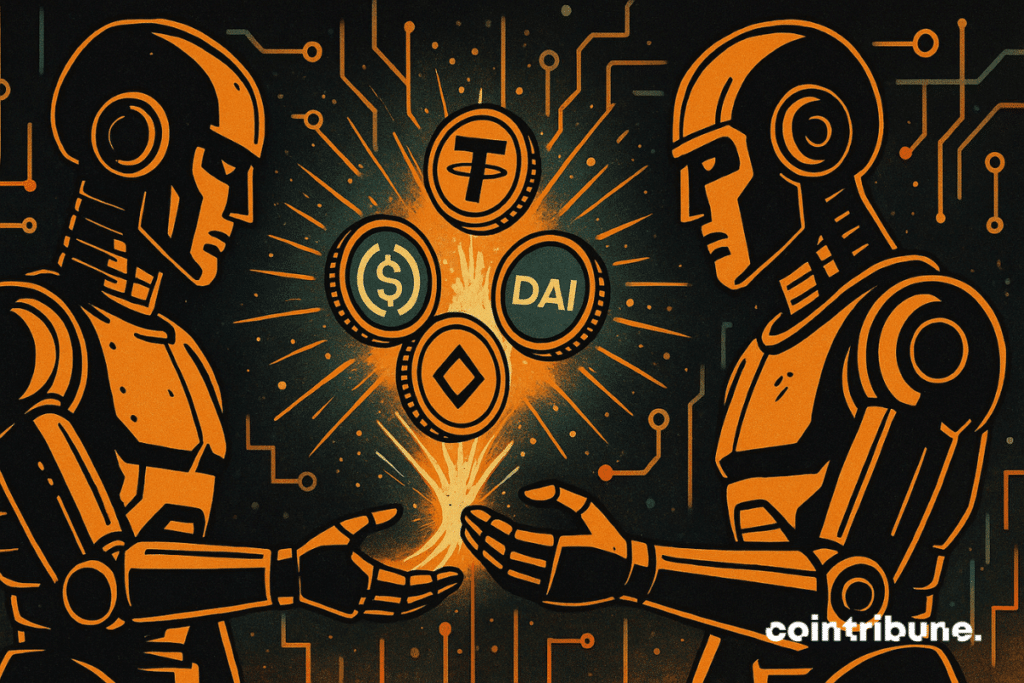Google and Coinbase Launch Protocol For Autonomous Software Payments
Tech giant Google partners with crypto exchange Coinbase to unveil groundbreaking protocol for automated software payments—cutting out traditional banking middlemen entirely.
How It Works
The new system enables smart contracts to process payments autonomously—no human approval needed. Software can now pay for its own cloud services, API calls, and computational resources in real-time.
Industry Impact
This move signals major enterprise adoption of crypto infrastructure. Google's cloud division gets direct access to crypto-native customers while Coinbase gains institutional credibility—because nothing says 'legitimate' like partnering with a company that makes money showing you cat videos.
Future Implications
Expect more tech firms to follow suit. Autonomous payments could revolutionize SaaS models, subscription services, and even payroll systems—assuming the crypto markets don't do their usual 40% nosedive right after launch.

In brief
- Google launches an open-source payment protocol allowing its AI agents to exchange money between themselves.
- This system supports both traditional bank cards and dollar-pegged stablecoins.
- The protocol is part of the Agent-to-Agent (A2A) project, aiming to standardize interactions between intelligent software.
- Coinbase, Salesforce, American Express, and more than 60 companies participated in its development.
Google launches an inter-agent payment protocol with stablecoin support
This Tuesday, Google unveiled an open-source payment protocol allowing AI agents to exchange value among themselves via traditional bank card rails and dollar-backed stablecoins, after the launch a few months ago of Gemini 2.0.
This announcement marks a significant extension of the “Agent-to-Agent” (A2A) framework, presented last April by Google, which aimed to standardize interactions between intelligent software. Now, this framework incorporates mechanisms for user consent verification, transaction security, and automated settlement, whether via blockchain or traditional payment networks.
This infrastructure could transform AI agents into “buyers, intermediaries, and automated management agents”, capable of acting and paying autonomously.
The protocol was co-developed with Coinbase, and developed in consultation with more than 60 partner companies, including Salesforce, American Express, and Etsy. Here are the key elements of the protocol :
- Agent-to-agent interoperability : AI agents can now communicate and also transfer value between themselves ;
- Multi-rail support : payments can transit via traditional bank cards or dollar-backed stablecoins ;
- Built-in security : user consent verification and implementation of transactional safeguards ;
- Traceability and auditability : each transaction is designed to be verifiable and integrable into enterprise systems.
This is therefore not a marginal experiment, but a robust protocol designed to fit into production environments, with an architecture aimed at automating financial flows in a professional context.
A global blockchain integration strategy by Google Cloud
Beyond the launch of the protocol itself, this initiative fits into a general strategy by Google Cloud, which for several months has been aiming to build programmable financial infrastructures for institutions.
This ambition was already reflected in the Universal Ledger project, a pilot aiming to create a settlement infrastructure compatible both with traditional financial systems and blockchains.
In a statement, James Tromans, Web3 director at Google Cloud, specified that the new payment protocol was “designed from the start to support both traditional infrastructures and stablecoins”, highlighting the goal of systemic interoperability between Web2 and Web3.
For example, ethereum Foundation also announced the creation of a team dedicated to decentralized artificial intelligence, named dAI, to position Ethereum as a trusted foundation for the AI economy.
This growing competition between centralized and decentralized actors reveals that the race to automated Web3 is now fully underway, each camp betting on its strengths : scale and integration on one side, resilience and transparency on the other.
Maximize your Cointribune experience with our "Read to Earn" program! For every article you read, earn points and access exclusive rewards. Sign up now and start earning benefits.

